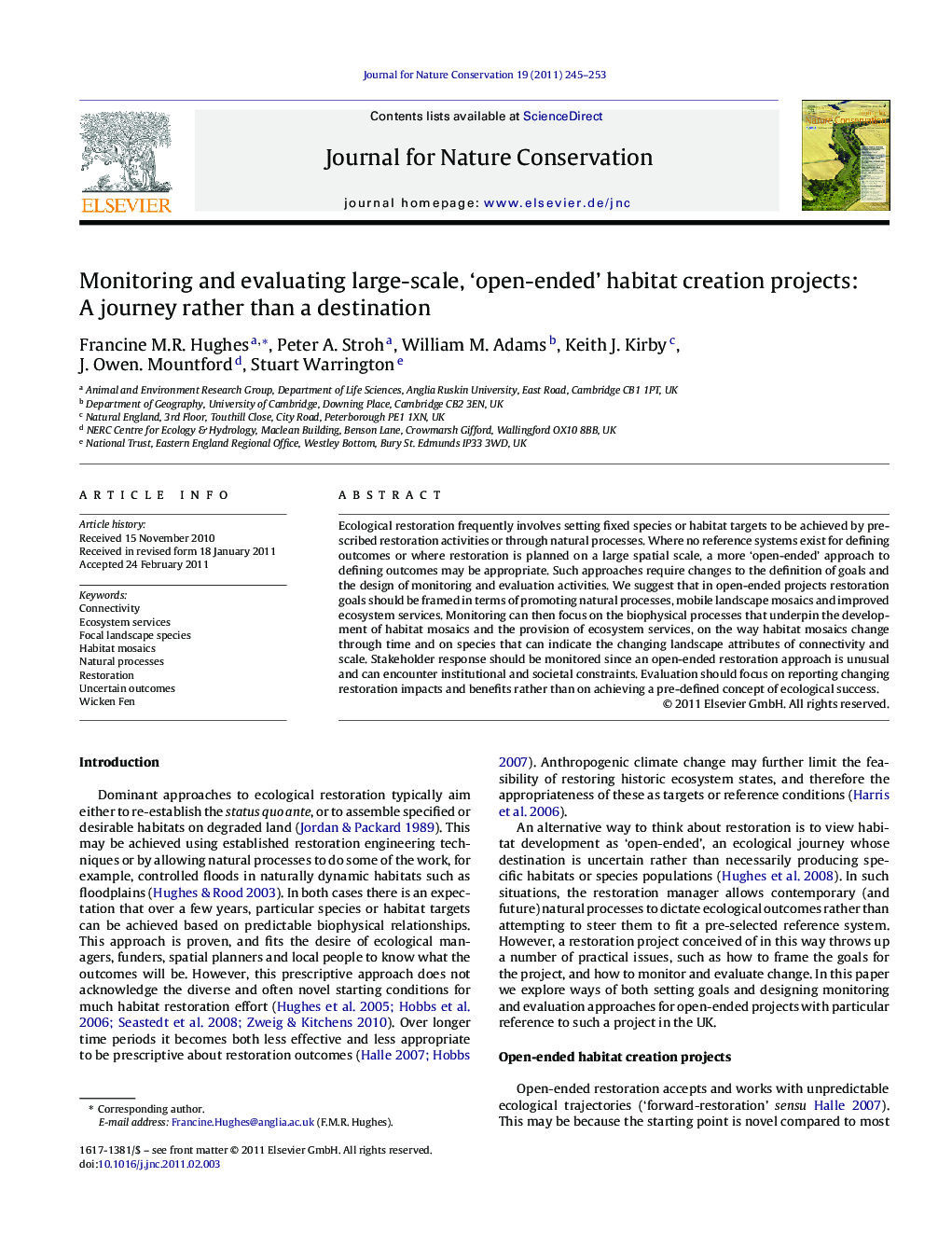| Article ID | Journal | Published Year | Pages | File Type |
|---|---|---|---|---|
| 4400101 | Journal for Nature Conservation | 2011 | 9 Pages |
Ecological restoration frequently involves setting fixed species or habitat targets to be achieved by prescribed restoration activities or through natural processes. Where no reference systems exist for defining outcomes or where restoration is planned on a large spatial scale, a more ‘open-ended’ approach to defining outcomes may be appropriate. Such approaches require changes to the definition of goals and the design of monitoring and evaluation activities. We suggest that in open-ended projects restoration goals should be framed in terms of promoting natural processes, mobile landscape mosaics and improved ecosystem services. Monitoring can then focus on the biophysical processes that underpin the development of habitat mosaics and the provision of ecosystem services, on the way habitat mosaics change through time and on species that can indicate the changing landscape attributes of connectivity and scale. Stakeholder response should be monitored since an open-ended restoration approach is unusual and can encounter institutional and societal constraints. Evaluation should focus on reporting changing restoration impacts and benefits rather than on achieving a pre-defined concept of ecological success.
